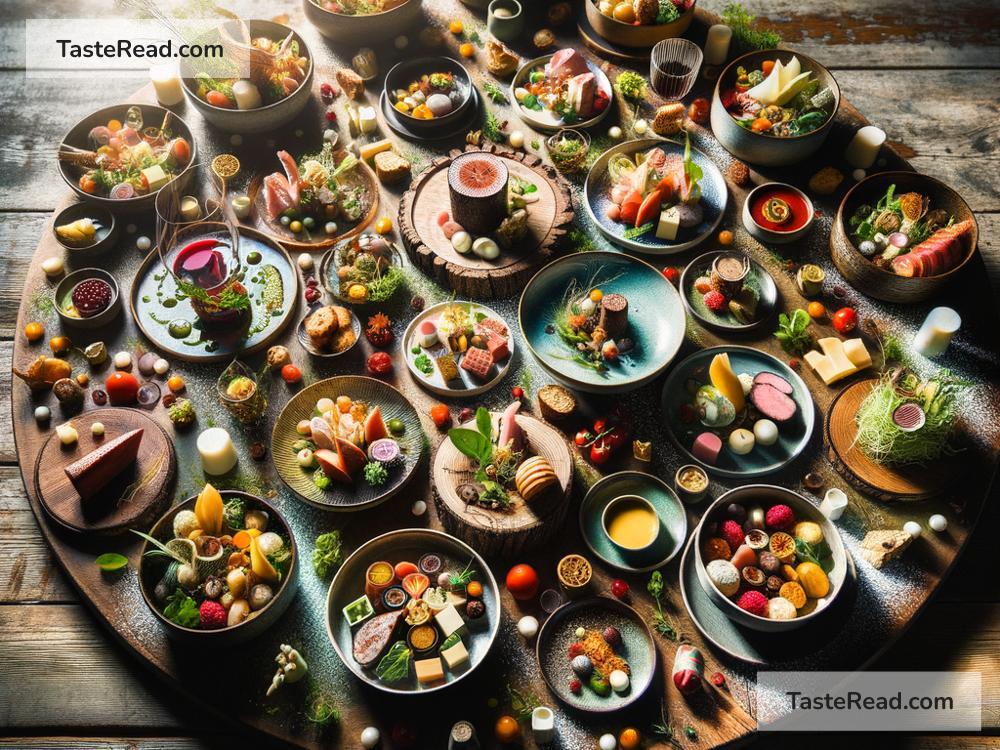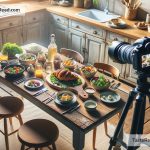How to Photograph Multi-Course Meals for Stunning Visual Stories
When it comes to capturing the essence of a beautiful dining experience, photographing multi-course meals stands out as an exquisite art form. It’s not just about snapping pictures of stunning dishes; it’s about weaving a visual narrative that tantalizes the senses and invites viewers into a story of culinary exploration. Whether you’re a seasoned photographer, a food enthusiast, or a chef wanting to showcase your creations, mastering the art of photographing multi-course meals can elevate your visual storytelling. Let’s dive into some simple yet effective strategies for creating mouthwatering visuals that do justice to every course of the meal.
1. Preparation is Key
Before the first dish is even served, take a moment to visualize the story you want to tell. Are you capturing a romantic dinner, a family gathering, or an avant-garde culinary experiment? Understanding the narrative will guide your photographic approach and help you select the right angles, lighting, and props. Ensure your camera battery is charged, and you have ample memory space. Having everything ready beforehand means you won’t miss a beat when the dishes start rolling out.
2. Embrace Natural Light
Natural daylight can be your best ally in photographing food. It beautifully highlights textures and colors, making dishes look fresh and appetizing. If possible, arrange to photograph the meal near a window with plenty of natural light. Soft, diffused light works wonders, so consider using a white curtain or a diffuser to soften harsh sunlight. However, remember to turn off artificial indoor lights to avoid mixing light sources, which can create unappealing color casts on your food.
3. Choose the Right Angles
Different dishes shine from various angles. For instance, a beautifully plated main course may look best captured from above, showcasing its composition and garnishes. Soups and beverages, on the other hand, often benefit from a side angle, emphasizing depth and layers. Don’t be afraid to experiment with different perspectives to find what best highlights each course’s unique qualities. Taking pictures from multiple angles also gives you more options when it comes to telling your visual story.
4. Mind the Background and Props
A cluttered or distracting background can take away from the beauty of your dish. Opt for simple, neutral backgrounds that make the colors and textures of the food pop. A plain table, a piece of linen, or even a wooden board can serve as excellent backdrops. Props, such as cutlery, napkins, or ingredients from the meal, can add context and depth to your images – but use them sparingly. The focus should remain on the food, with props enhancing, not overshadowing, its appeal.
5. Pay Attention to Composition
Good composition is key to creating visually appealing images. Consider using the rule of thirds to arrange your dish, cutlery, and props in a way that’s balanced and pleasing to the eye. Leave some negative space to let the dish breathe; crowding too many elements can make your photo look chaotic. Create a flow within the frame that guides the viewer’s eye through the story you’re telling, from the appetizer through to the dessert.
6. Capture the Details
The devil is in the details, as they say. Close-up shots of textures, garnishes, or a drip of sauce can add an exciting layer to your visual narrative. These details invite viewers to lean in closer, almost tasting the meal with their eyes. Such images can be particularly effective in between shots of entire dishes, enriching the story with sensory depth.
7. Stay Flexible and Creative
Despite all the preparation, be prepared for spontaneity. Maybe the chef sends out an unexpected amuse-bouche, or the light changes beautifully as the meal progresses. Stay flexible and keep a creative eye out for these unanticipated moments. They can often add a unique and personal touch to your story, making it all the more engaging.
8. Tell a Story
Finally, remember that you’re not just photographing food; you’re telling a story. Think about the journey you want to take your viewers on. Arrange your images in a sequence that builds up, from anticipation (the setting, the first course) to climax (the main dish) and resolution (dessert, perhaps accompanied by a satisfied sigh). Each photo should be a chapter in a delicious tale of culinary adventure.
Photographing multi-course meals is an art that combines technique, creativity, and storytelling. By following these simple tips, you can create stunning visual stories that not only showcase beautiful dishes but also evoke the flavors, textures, and emotions of the dining experience. So, pick up your camera, and let’s make some mouthwatering memories!


